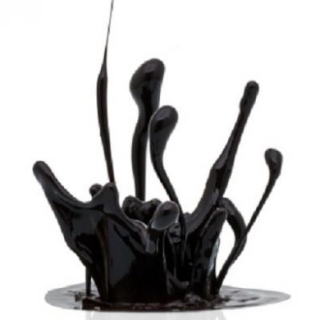


Oil declined for a second day to near its lowest level since early June, with the focus turning to how much OPEC+ will increase output quotas this weekend.
Brent crude traded below $67 a barrel, while West Texas Intermediate was near $65. The Organization of the Petroleum Exporting Countries and its allies are expected to agree to a fourth monthly major supply increase at a meeting on Sunday, according to a Bloomberg survey, as leader Saudi Arabia continues its bid to reclaim market share.
A 411,000 barrel-a-day quota hike is like this weekend and there will probably be another increase next month, said Robert Rennie, the head of commodity and carbon research at Westpac Banking Corp. "As we move into the third quarter and beyond, we see increasing downside risks" and oil could test $60 a barrel, he said.
Oil lost almost 10% last quarter in a volatile three months that saw prices drop sharply in April following President Donald Trump's tariff announcements, surge in June after Israel attacked Iran before erasing gains as hostilities eased. The focus is now returning to supply and demand fundamentals, with potential trade deals and increased OPEC+ production the biggest near-term drivers.
Higher import tariffs are due to restart on July 9 for dozens of top US trading partners. While negotiations are ongoing in a bid to finalize deals after the July 4 holiday, there are signs of snarls with countries including Japan. Trump has threatened fresh levies on the Asian nation, citing its apparent unwillingness to accept US rice imports.
Brent for September settlement declined 0.5% to $66.42 a barrel at 10:25 a.m. in Singapore.
WTI for August delivery fell 0.5% to $64.76 a barrel.
Source : Bloomberg
Oil prices rose on Friday (November 7th), but remained on track for a second straight weekly loss after three days of declines on oversupply concerns and slowing US demand. Brent crude rose 60 cents,...
Oil prices edged higher but remained on track for a second weekly decline. West Texas Intermediate (WTI) briefly approached $60 per barrel, while Brent held steady around $63 on Thursday. However, bot...
Oil prices declined on Thursday as investors considered a potential supply glut, as well as weakened demand in the United States, the world's largest oil consumer. Brent crude futures settled down 14...
Oil prices edged higher on Thursday (November 6), boosted by easing concerns over a potential oversupply as sanctions against Russian companies began to take effect. After closing at a two-week low i...
Oil prices weakened on Thursday (November 6th) as the market digested rising US inventory data and lingering concerns about oversupply. WTI traded below $60 and Brent below $64, continuing its two-day...
Two weeks before the US Federal Reserve's final meeting, with the federal government's data taps closed, Atlanta Fed staff bolstered their economic outlook by analyzing how previous surveys of business executives aligned with data on employment,...
Gold rose on Friday (November 7) as expectations of further interest rate cuts from the Federal Reserve and lingering concerns over the US economic outlook amid the prolonged government shutdown boosted demand. Spot gold rose 0.8% to $4,010.72 an...
Oil prices rose on Friday (November 7th), but remained on track for a second straight weekly loss after three days of declines on oversupply concerns and slowing US demand. Brent crude rose 60 cents, or 1%, to $63.98 per barrel at 09:04 GMT. US...
 Asia-Pacific markets declined on Wednesday, following a decline on Wall Street, which was driven by concerns about the valuations of artificial...
Asia-Pacific markets declined on Wednesday, following a decline on Wall Street, which was driven by concerns about the valuations of artificial...
 The Institute for Supply Management (ISM) is scheduled to release its October Services Purchasing Managers' Index (PMI) on Wednesday. The report, a...
The Institute for Supply Management (ISM) is scheduled to release its October Services Purchasing Managers' Index (PMI) on Wednesday. The report, a...
 The ISM Services PMI rose to 52.4 in October 2025 from 50 in September, beating forecasts of 50.8, pointing to the strongest expansion in the...
The ISM Services PMI rose to 52.4 in October 2025 from 50 in September, beating forecasts of 50.8, pointing to the strongest expansion in the...
 World markets kicked off November in an upbeat mood, riffing off buoyant company earnings and calmer trade relations while batting away OPEC's...
World markets kicked off November in an upbeat mood, riffing off buoyant company earnings and calmer trade relations while batting away OPEC's...